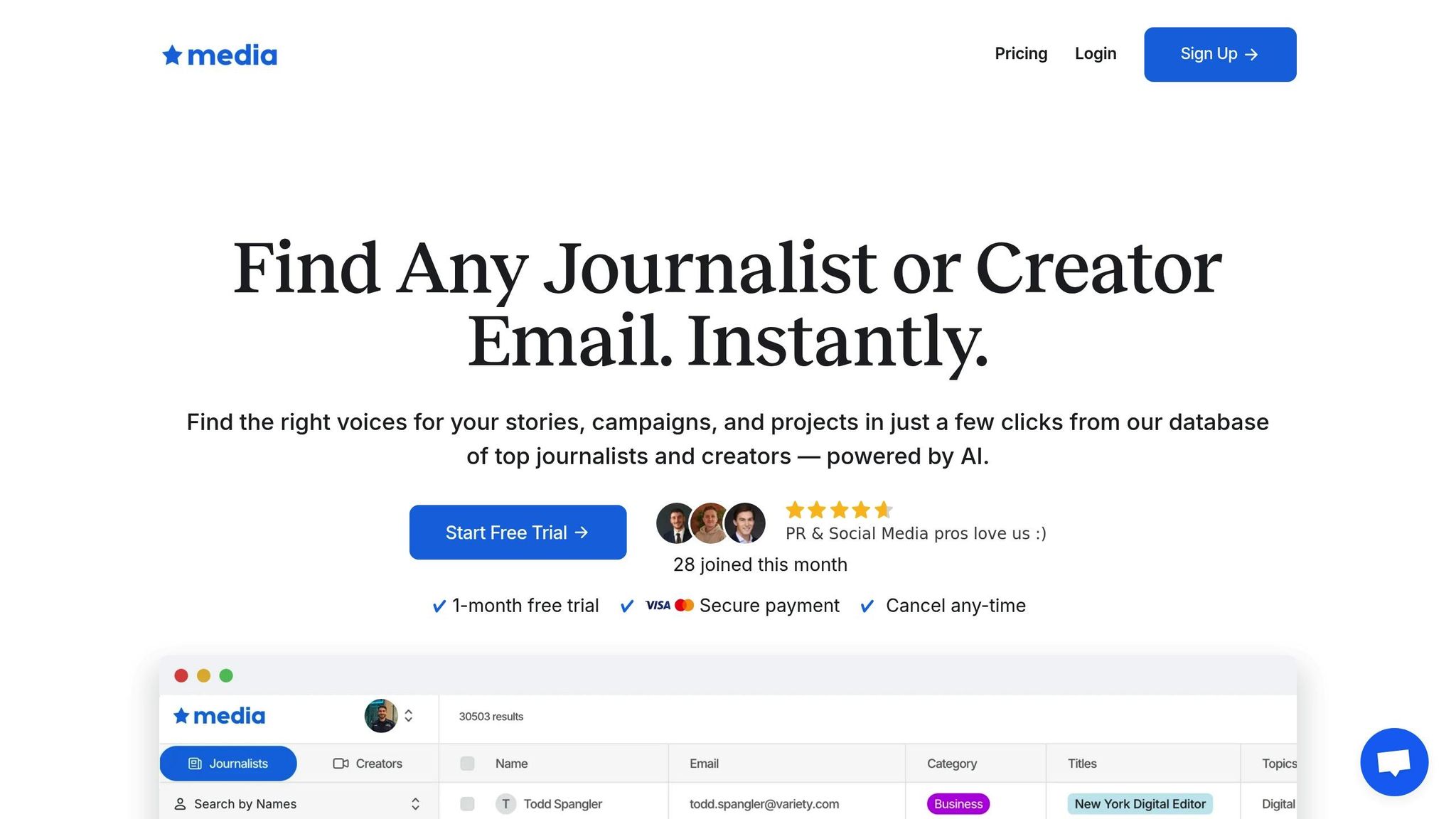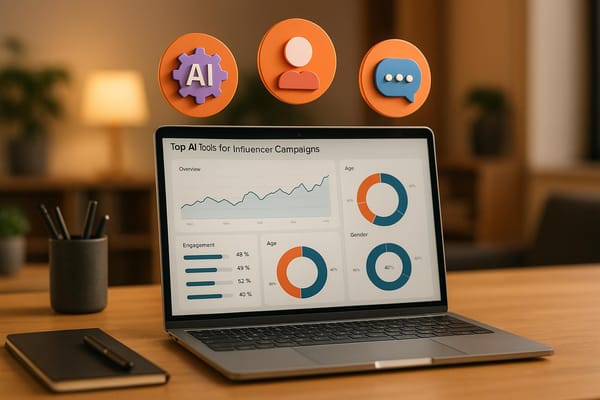Top Multi-Platform Campaigns: Lessons for Brand Stories
Learn how to create impactful multi-platform campaigns that engage audiences, boost conversions, and tell consistent brand stories across channels.

In today’s fragmented media world, businesses must tell their stories across multiple platforms to succeed. Why? Because consumers interact with brands on various channels - social media, email, podcasts, and more. A well-executed multi-platform campaign ensures consistent messaging tailored to each platform, boosting engagement and conversions. Here's what you need to know:
- Multi-platform campaigns deliver a unified message across channels like Instagram, LinkedIn, email, and more, while adapting content to each platform's style.
- Research shows brands using 3+ platforms achieve 287% higher conversion rates and 9.5% annual revenue growth.
- Consistency in messaging and visuals builds trust, while platform-specific content keeps audiences engaged.
- Tracking performance across platforms is key to refining strategies and maximizing impact.
The takeaway? Success lies in balancing consistency with platform-specific content, leveraging tools like Media AI for efficient execution, and using data to fine-tune campaigns. This approach not only strengthens customer connections but also drives measurable results.
How to Create A Cross-Channel Marketing Strategy
Key Elements of Successful Multi-Platform Campaigns
Crafting a multi-platform campaign that truly connects with your audience boils down to three key components. These elements work together to ensure your brand’s message not only reaches people but stays consistent and impactful across various channels. Start with a strong brand foundation, adapt content to each platform, and track performance to fine-tune your approach.
Maintaining Consistency Across Platforms
Consistency is the glue that holds any multi-platform campaign together. Your brand should be instantly recognizable no matter where someone encounters it - be it Instagram, LinkedIn, or a podcast ad. This means your visual identity, tone of voice, and core messaging need to stay aligned across all platforms.
But consistency doesn’t mean being repetitive. Think of it as delivering the same message in ways that fit each platform’s style. For example, your color palette, logo, and messaging pillars should appear across all channels, but how they’re presented can vary. A polished infographic might work for LinkedIn, while a playful GIF could resonate on Instagram.
Visual consistency builds recognition and trust. When your audience sees familiar elements - like your logo or brand colors - they’re more likely to engage and remember your business when making decisions.
Equally important is your brand voice. It should remain steady but flexible enough to match each platform’s norms. Take a professional services brand, for instance. On LinkedIn, its tone might be formal and authoritative, while on Twitter, it could lean toward a conversational style. The personality stays the same, but the delivery shifts to meet audience expectations.
Customizing Content for Each Platform
While consistency is crucial, tailoring your content to fit each platform is just as important. Every social media platform, website, or communication channel has its own preferred formats and audience behaviors. Recognizing these differences and adapting your content accordingly is what sets successful campaigns apart.
Start by aligning your content format with how people consume media on each platform. On Instagram, high-quality visuals and concise captions are key. LinkedIn audiences often prefer thoughtful, longer-form content that offers professional insights. TikTok thrives on authentic, entertaining videos, while email newsletters allow for in-depth storytelling and clear calls-to-action.
Timing also matters. Different platforms have different peak engagement times. For example, Twitter tends to perform well during commuting hours, while platforms like Instagram and TikTok see more activity in the evenings when users are unwinding.
Remember that audience expectations vary by platform. The same person might follow your brand on multiple channels but expect different things from each. On Twitter, they might look for quick updates or industry news, while on Instagram, they could be drawn to behind-the-scenes content. Meanwhile, LinkedIn is a great place for detailed case studies or professional insights.
Each platform also favors specific formats. Instagram works best with visuals, LinkedIn demands depth, Twitter thrives on brevity, and YouTube is ideal for in-depth tutorials. By tailoring both your content and timing, you can meet your audience where they are and how they prefer to engage.
Tracking Campaign Performance
To know if your campaign is hitting the mark, you need to measure its performance across all platforms. Each channel provides different metrics, and combining these insights gives you a full picture of how your campaign is doing.
For example, Instagram emphasizes likes, comments, and saves, while LinkedIn focuses on shares and professional engagement. YouTube tracks watch time and subscriber growth, and email campaigns rely on open rates and click-through rates. Knowing which metrics matter most on each platform helps you refine your strategy.
One of the biggest challenges in multi-platform campaigns is figuring out which platform drives conversions. A customer might first see your brand on Instagram, do some research on Google, and finally make a purchase after receiving an email. Cross-platform analytics tools can help you map out these customer journeys and identify which touchpoints contribute most to conversions.
Real-time monitoring is another game-changer. If a piece of content is performing exceptionally well on one platform, you can quickly adapt it for others. On the flip side, if something isn’t landing, you can adjust your strategy before wasting resources.
Finally, calculate ROI by looking at both short-term results and long-term impact. Some platforms might drive immediate sales, while others build brand awareness and customer trust that lead to future conversions. Measuring both helps you understand the true value of each platform and refine your approach for future campaigns.
Examples of Top Multi-Platform Campaigns
Real-world campaigns show how tailoring a core message for different platforms can amplify a brand's impact. Let’s break down some strategies that make these campaigns stand out:
- Customized Content: Successful campaigns adapt their content to fit the strengths of each platform. For instance, they provide immersive, detailed experiences on blogs and video platforms, while keeping social media posts short, punchy, and engaging.
- Brand Consistency: While the creative approach may change across platforms, the brand’s identity remains unmistakable, ensuring a cohesive experience for the audience.
- Collaborations and User-Generated Content: By partnering with authentic voices and encouraging user participation, these campaigns create stronger, more personal connections with their audience.
These strategies not only make campaigns more effective but also ensure the core message resonates across all channels. Up next, we’ll dive into case studies that showcase these approaches in action.
Tools for Multi-Platform Campaign Execution
Running campaigns across multiple platforms means juggling various formats, audiences, and workflows. The right tools can transform this complex process into a smooth operation, ensuring consistent results without unnecessary chaos.
To succeed, PR teams need tools that provide access to journalists for earned media coverage while also connecting with influencers and creators for storytelling on social platforms. The real challenge? Managing these diverse collaborators through a single, unified system. That’s where Media AI steps in to simplify the process.
How Media AI Improves Campaign Efficiency

Media AI tackles the complexity of multi-platform campaigns by integrating journalist and creator outreach into one platform. Its dual-database system includes over 30,000 verified journalist and creator contacts, making it easier for teams to find the right people for their campaigns. With advanced filters, users can narrow down contacts based on criteria like industry, publication type, follower count, engagement rates, and location.
For example, imagine a tech startup launching a new app. With Media AI, they can quickly identify tech journalists at major outlets as well as tech influencers with highly engaged audiences in their target regions. This targeted approach saves time and ensures the campaign reaches the right audience.
Another useful feature is the streamlined export option, which lets teams download filtered contact lists and integrate them directly into their existing CRM systems or email marketing platforms.
Media AI also offers a flexible pricing model: $99/month for access to one database or $149/month for both. This no-contract option allows agencies to adjust their subscriptions based on campaign needs without committing to long-term agreements.
Improving Collaboration with Media AI
Media AI doesn’t just boost efficiency - it also enhances the quality of outreach. By providing verified and detailed contact information, it enables PR professionals to craft personalized pitches that resonate with specific journalists or creators. Take a fashion brand, for instance. They can use Media AI to find lifestyle journalists for magazine features, Instagram influencers for eye-catching visuals, and YouTube creators for in-depth product reviews - all from the same platform.
The database is continuously updated, ensuring access to accurate contact details - a critical factor when working under tight deadlines or coordinating with multiple stakeholders.
Instead of overloading users with complex analytics or automated messaging features, Media AI focuses on doing one thing exceptionally well: contact discovery. It integrates seamlessly with existing project management and tracking tools, allowing teams to maintain their current workflows while improving the quality of their media relationships. This streamlined approach keeps the focus on building meaningful connections and delivering impactful campaigns.
Best Practices for Multi-Platform Brand Stories
To make your brand's story shine across multiple platforms, it's essential to refine your strategies. These best practices can help you craft campaigns that connect more effectively with your audience.
Consistent Story, Tailored Content
Stick to a unified core message, but adapt your content to fit the strengths of each platform. For instance, focus on eye-catching visuals and quick videos on platforms like Instagram, while reserving detailed storytelling for channels where users expect more depth, such as blogs or LinkedIn.
Partner with the Right Creators
Team up with creators who genuinely align with your brand's values. Instead of chasing high follower counts, look for influencers who bring real engagement, a relevant audience, and authentic passion for your message. These partnerships can make your campaigns feel more relatable and impactful.
Leverage Real-Time Data
Use real-time analytics to fine-tune your campaigns as they run. For example, one campaign saw newsletter signups skyrocket by 635% after tweaking its slide-in call-to-action. Similarly, removing autoplay videos led to a 16% increase in product views. Location-based strategies like geo-conquesting achieved a 4.69% post-click conversion rate, while geofencing brought in 269 verified visits within a single month.
Conclusion: Lessons for Future Multi-Platform Campaigns
The most effective multi-platform campaigns share a few key traits: consistent messaging, flexibility in execution, and smart use of technology. Together, these elements help brands craft stories that resonate across various channels while staying true to their identity.
Consistency is the backbone of successful multi-platform storytelling. Brands that deliver consistent messaging across all channels report a 23% increase in revenue and achieve 89% customer retention rates, compared to just 33% for brands with weaker multichannel strategies. But consistency doesn’t mean copying and pasting the same content everywhere. Instead, it’s about maintaining a recognizable brand voice, values, and visual identity while tailoring content to fit each platform’s unique strengths. This balance is the secret behind the impressive performance metrics of integrated campaigns.
For example, cross-platform campaigns generate 35% higher ROI, boost consumer engagement by 30%, and help businesses using three or more marketing channels achieve 287% higher conversion rates. Additionally, customers engaging with these campaigns tend to spend 30% more than those interacting with single-channel efforts.
The difference between good and great campaigns lies in their flexibility. Instead of focusing solely on where content is distributed, brands need to think about how it feels on each platform. TikTok, for instance, rewards a different style of content than Instagram Reels or YouTube Shorts, even if the core message is the same. This shift toward optimizing presentation for each platform allows brands to connect more authentically with their audiences.
Technology also plays a vital role in navigating the complexities of multi-platform campaigns. Tools powered by artificial intelligence, such as Media AI, simplify the process of identifying the right collaborators for each platform. With access to over 30,000 verified journalists and creators, brands can build meaningful partnerships that prioritize genuine engagement over vanity metrics like follower counts.
The future belongs to brands that embrace what’s called the "adaptive storytelling model." This approach involves creating modular content frameworks where core elements remain consistent while flexible, platform-specific components adapt to different contexts. By doing so, brands can maximize the strengths of each channel while staying true to their identity.
Ultimately, success in multi-platform campaigns isn’t about being everywhere all the time. It’s about being strategically present where your audience is, delivering value while speaking the unique language of each platform. These principles not only strengthen connections with your audience but also drive measurable results, ensuring your campaigns have a lasting impact.
FAQs
How can brands ensure consistent messaging across platforms without sounding repetitive?
To keep your messaging consistent across different platforms without sounding repetitive, begin by developing clear brand guidelines. These should define your tone, style, and key messages, ensuring that everything you create reflects your brand's identity. Pair this with templates and a unified visual style to make your content instantly recognizable, while still adapting your messages to suit the specific vibe and audience of each platform.
It's also a good idea to regularly review your content and use centralized tools for content management. This approach helps you stay aligned and avoid unnecessary overlap. The aim is to stick to your brand's core story while presenting it in fresh, engaging ways that resonate with each unique audience and channel.
How can brands effectively adapt their stories for different platforms?
To tailor brand stories effectively across different platforms, start by aligning your content with the specific strengths and characteristics of each channel. This means adapting elements like visuals, tone, and captions to suit the platform’s audience and functionality. For example, TikTok thrives on short, captivating videos, while LinkedIn is better for longer, in-depth posts that encourage professional discussions.
At the same time, keep your messaging consistent across platforms, even as you adjust the format to fit each medium. Take a campaign’s central message and present it in various ways: as an infographic on Instagram, a detailed blog post on your website, or a conversational thread on Twitter. This strategy not only keeps your brand relevant but also boosts engagement by tapping into what works best for each platform and its audience.
How does Media AI help brands run more efficient and impactful multi-platform campaigns?
Media AI takes the complexity out of managing multi-platform campaigns by offering tools that simplify content creation, fine-tune campaign strategies, and deliver tailored messages. Thanks to its AI-driven features, brands can make adjustments on the fly, anticipate performance trends, and ensure their messaging connects with audiences across various channels.
With access to a database of more than 30,000 journalists and creators, Media AI helps PR professionals and marketers quickly identify the perfect collaborators. This not only saves time but also enhances the overall effectiveness of campaigns, making it a powerful resource for crafting consistent and engaging brand stories across multiple platforms.





